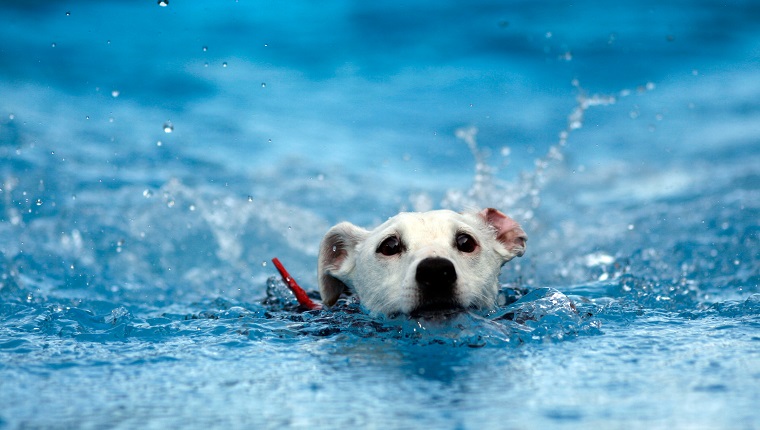Near drowning in dogs, also sometimes called hypoxemia due to aspiration of water, refers to a situation where a dog comes close to drowning after being submerged in water for a dangerous period of time.
It can result in a number of symptoms that can include breathing and respiratory issues, too much carbon dioxide being present in the blood, and damage to vital organs. This is a medical emergency that requires immediate treatment.
If you see the signs that your dog is having issues after coming close to drowning, then you must get to a veterinarian for a proper diagnosis and advice. Here’s what you should know about the symptoms, causes, and treatments for near drowning in dogs.
Symptoms Of Near Drowning In Dogs
Near drowning in dogs is a situation that can produce a range of symptoms. Some of the most common symptoms include:
- Skin and gums turning a blue color
- Vomiting
- Very increased or very decreased heart rate
- Coughing and spitting up red sputum
- Breathing difficulties
- Higher or lower than usual heart rate
Causes Of Near Drowning In Dogs

The cause of near drowning in dogs is many times due to a negligent human, especially when around bodies of water.
The following factors may also place a dog at a higher risk:
- Being a very young and inexperienced dog
- Having a seizure while in water
- Drinking water from a hose
- Trauma to the head area
Veterinary Treatments
If your dog seems to have suffered from near drowning, your veterinarian will want to carry out a full physical examination. They’ll conduct blood and urine tests.
The vet will most likely also use a chest X-ray to try and detect any signs of your dog having developed pneumonia. Vets may also recommend using other imaging techniques to monitor the heart.
When it comes to treatment, it is usually considered to be an emergency situation, and the vet will likely have to carry out any measures or procedures in the hospital.
In general, vets use supplementary oxygen along with intravenous fluids during treatment. Throughout the process, your vet will continually monitor and asses your dog’s body temperature.
If there are signs of pneumonia or infection, your vet might prescribe a course of medication. As ever, if your vet prescribes your dog any medication, it is vital that you stick to the precise dosage and administration instructions and complete the entire course of medicine.
Has your dog ever suffered from a near drowning incident? How do you keep your dog safe around the water? Let us know in the comments section below.









